Abbott, R., Albach, D., Ansell, S., Arntzen, J.W., Baird, S.J.E., Bierne, N., et al., 2013. Hybridization and speciation. J. Evol. Biol. 26, 229-246. https://onlinelibrary.wiley.com/doi/abs/10.1111/j.1420-9101.2012.02599.x
|
Ait Belkacem, A., Gast, O., Stuckas, H., Canal, D., LoValvo, M., Giacalone, G., et al., 2016. North African hybrid sparrows (Passer domesticus, P. hispaniolensis) back from oblivion - ecological segregation and asymmetric mitochondrial introgression between parental species. Ecol. Evol. 6, 5190-5206.
|
Anderson, E.C., 2008. Bayesian inference of species hybrids using multilocus dominant genetic markers. Phil. Trans. R. Soc. B. 363, 2841-2850. https://www.ncbi.nlm.nih.gov/pubmed/18508754
|
Anderson, E.C., Thompson, E.A., 2002. A model-based method for identifying species hybrids using multilocus genetic data. Genetics 160, 1217-1229
|
Arantes, L.S., Ferreira, L.C.L., Driller, M., Repinaldo Filho, F.P.M., Mazzoni, C.J., Santos, F.R., 2020. Genomic evidence of recent hybridization between sea turtles at Abrolhos Archipelago and its association to low reproductive output. Sci. Rep. 10, 12847
|
Araya-Anchetta, A., Scoles, G.A., Giles, J., Busch, J.D., Wagner, D.M., 2013. Hybridization in natural sympatric populations of Dermacentor ticks in northwestern North America. Ecol. Evol. 3, 714-724
|
Ardren, W.R., Borer, S., Thrower, F., Joyce, J.E., Kapuscinski, A.R., 1999. Inheritance of 12 microsatellite loci in Oncorhynchus mykiss. J. Hered. 90, 529-536
|
|
Arnold, M., 1997. Natural Hybridization and Evolution. Oxford University Press, Oxford
|
Bandelt, H.J., Forster, P., Rohl, A., 1999. Median-joining networks for inferring intraspecific phylogenies. Mol. Biol. Evol. 16, 37-48
|
Barbujani, G., Pilastro, A., De Domenico, S., Renfrew, C., 1994. Genetic variation in North Africa and Eurasia: neolithic demic diffusion vs. Paleolithic colonisation. Am. J. Phys. Anthropol. 95, 137-154
|
|
Barton, N.H., 2001. The role of hybridization in evolution. Mol. Ecol. 10, 551-568
|
Beatty, G.E., Philipp, M., Provan, J., 2010. Unidirectional hybridization at a species’ range boundary: implications for habitat tracking. Divers. Distrib. 16, 1-9.
|
Benson, J.F., Hostetler, J.A., Onorato, D.P., Johnson, W.E., Roelke, M.E., O'Brien, S.J., et al., 2011. Intentional genetic introgression influences survival of adults and subadults in a small, inbred felid population. J. Anim. Ecol. 80, 958-967
|
Brower, A.V., 2013. Introgression of wing pattern alleles and speciation via homoploid hybridization in Heliconius butterflies: a review of evidence from the genome. Proc. R. Soc. B. 280, 20122302
|
Cai, T., Wu, G., Sun, L., Zhang, Y., Peng, Z., Guo, Y., et al., 2021. Biogeography and diversification of Old World buntings (Aves: Emberizidae): radiation in open habitats. J. Avian Biol. 52, 6.
|
Chan, W.Y., Hoffmann, A.A., van Oppen, M.J.H., 2019. Hybridization as a conservation management tool. Conserv. Lett. 12, e12652.
|
Chapuis, M.P., Estoup, A., 2007. Microsatellite null alleles and estimation of population differentiation. Mol. Biol. Evol. 24, 621-631
|
Charles, K.M., Stehlik, I., 2021. Assisted species migration and hybridization to conserve cold-adapted plants under climate change. Conserv. Biol. 35, 559-566
|
Chesser, R.K., Baker, R.J., 1996. Effective sizes and dynamics of uniparentally and diparentally inherited genes. Genetics 144, 1225-1235
|
Dabrowski, A., Fraser, R., Confer, J.L., Lovette, I.J., 2005. Geographic variability in mitochondrial introgression among hybridizing populations of Golden-winged (Vermivora chrysoptera) and Blue-winged (V. opinus) Warblers. Conserv. Genet. 6, 843-853.
|
Delph, L.F., Demuth, J.P., 2016. Haldane's rule: genetic bases and their empirical support. J. Hered. 107, 383-391
|
Evanno, G., Regnaut, S., Goudet, J., 2005. Detecting the number of clusters of individuals using the software STRUCTURE: a simulation study. Mol. Ecol. 14, 2611-2620
|
Excoffier, L., Lischer, H.E., 2010. Arlequin suite ver 3.5: a new series of programs to perform population genetics analyses under Linux and Windows. Mol. Ecol. Resour. 10, 564-567
|
|
Frankel, O.H., Soule, M.E., 1981. Conservation and Evolution. Cambridge University Press, Cambridge
|
Frankowski, J., Lubke, K., Coke, M., Weyl, O.L.F., 2020. Genetic variability and demographic history of Anguilla mossambica (Peters, 1852) from continental Africa and Madagascar. J. Fish Biol. 96, 1251-1259. https://www.ncbi.nlm.nih.gov/pubmed/31777080
|
Gainsford, A., Jones, G.P., Hobbs, J-P.A., Heindler, F.M., van Herwerden, L., 2020. Species integrity, introgression, and genetic variation across a coral reef fish hybrid zone. Ecol. Evol. 10, 11998-12014. https://onlinelibrary.wiley.com/doi/abs/10.1002/ece3.6769
|
Goudet, J., 1995. FSTAT (Version 1.2): a computer program to calculate F-statistics. J. Hered. 86, 485-486
|
Grant, P.R., Grant, B.R., 2019. Hybridization increases population variation during adaptive radiation. Proc. Natl. Acad. Sci. U.S.A. 116, 23216-23224
|
Grant, P.R., Grant, B.R., 2014. Synergism of natural selection and introgression in the origin of a new species. Am. Nat. 183, 671-681
|
|
Hall, T.A., 1999. BioEdit: a user-friendly biological sequence alignment editor and analysis program for Windows 95/98/NT. Nucleic Acids Symp. Ser. 41, 95-98
|
|
Han, Z., Zhang, L-S., Qin, B.O., Wang, L.I.N., Liu, Y.U., Fu, V.W.K., et al., 2017. Updated breeding distribution and population status of Jankowski’s Bunting Emberiza jankowskii in China. Bird Conserv. Int. 28, 643-652
|
Harrisson, K.A., Pavlova, A., Goncalves da Silva, A., Rose, R., Bull, J.K., Lancaster, M.L., et al., 2016. Scope for genetic rescue of an endangered subspecies though re-establishing natural gene flow with another subspecies. Mol. Ecol. 25, 1242-1258
|
Hoban, S.M., McCleary, T.S., Schlarbaum, S.E., Romero-Severson, J., 2009. Geographically extensive hybridization between the forest trees American butternut and Japanese walnut. Biol. Lett. 5, 324-327. https://pubmed.ncbi.nlm.nih.gov/19324631
|
Hoelzer, G.A., 1997. Inferring phylogenies from mtDNA variation: mitochondrial-gene trees versus nuclear-gene trees revisited. Evolution 51, 622-626
|
Holder, M.T., Anderson, J.A., Holloway, A.K., 2001. Difficulties in detecting hybridization. Syst. Biol. 50, 978-982
|
Irwin, D.E., Rubtsov, A.S., Panov, E.N., 2009. Mitochondrial introgression and replacement between yellowhammers (Emberiza citrinella) and pine buntings (Emberiza leucocephalos) (Aves: Passeriformes). Biol. J. Linn. Soc. 98, 422-438
|
Jacquemyn, H., Brys, R., Honnay, O., Roldan-Ruiz, I., 2012. Asymmetric gene introgression in two closely related Orchis species: evidence from morphometric and genetic analyses. BMC Evol. Biol. 12, 178
|
Jangjoo, M., Matter, S.F., Roland, J., Keyghobadi, N., 2016. Connectivity rescues genetic diversity after a demographic bottleneck in a butterfly population network. Proc. Natl. Acad. Sci. U.S.A. 113, 10914-10919
|
Jeanmougin, F., Thompson, J.D., Gouy, M., Higgins, D.G., Gibson, T.J., 1998. Multiple sequence alignment with Clustal X. Trends Biochem. Sci. 23, 403-405
|
Jiang, Y.L., Gao, W., Lei, F.M., Wan, D.M., Zhao, J., Wang, H.T., 2008. Nesting biology and population dynamics of Jankowski's Bunting Emberiza jankowskii in Western Jilin, China. Bird Conserv. Int. 18, 153-163
|
Keller, L.F., Waller, D.M., 2002. Inbreedings effects in wild populations. Trends Ecol. Evol. 17, 230-241
|
Kutschera, V.E., Bidon, T., Hailer, F., Rodi, J.L., Fain, S.R., Janke, A., 2014. Bears in a forest of gene trees: phylogenetic inference is complicated by incomplete lineage sorting and gene flow. Mol. Biol. Evol. 31, 2004-2017
|
Lade, J.A., Murray, N.D., Marks, C.A., Robinson, N.A., 1996. Microsatellite differentiation between Phillip Island and mainland Australian populations of the red fox Vulpes vulpes. Mol. Ecol. 5, 81-87
|
Lamy, T., Pointier, J.P., Jarne, P., David, P., 2012. Testing metapopulation dynamics using genetic, demographic and ecological data. Mol. Ecol. 21, 1394-1410
|
Langin, K.M., Sillett, T.S., Funk, W.C., Morrison, S.A., Ghalambor, C.K., 2017. Partial support for the central-marginal hypothesis within a population: reduced genetic diversity but not increased differentiation at the range edge of an island endemic bird. Heredity 119, 8-15.
|
Lepais, O., Petit, R.J., Guichoux, E., Lavabre, J.E., Alberto, F., Kremer, A., et al., 2009. Species relative abundance and direction of introgression in oaks. Mol. Ecol. 18, 2228-2242
|
Lexer, C., Fay, M.F., Joseph, J.A., Nica, M.S., Heinze, B., 2005. Barrier to gene flow between two ecologically divergent Populus species, P. alba (white poplar) and P. tremula (European aspen): the role of ecology and life history in gene introgression. Mol. Ecol. 14, 1045-1057
|
Li, D., Sun, K., Zhao, Y., Lin, A., Li, S., Jiang, Y., et al., 2017. Polymorphism in the major histocompatibility complex (MHC class II B) genes of the Rufous-backed Bunting (Emberiza jankowskii). PeerJ 5, e2917
|
Li, S., Li, D., Zhang, L.S., Shang, W.P., Qin, B., Jiang, Y.L., 2021. High levels of genetic diversity and an absence of genetic structure among breeding populations of the endangered Rufous-backed Bunting in Inner Mongolia, China: implications for conservation. Avian Res. 12, 7
|
|
Liang, G., Li, T., Yin, Z.H., Lei, F.M., 2008. Molecular phylogenetic analysis of some Fringillidae species based on mitochondrial coi gene sequences. Zool. Res. 29, 465-475
|
Lima-Rezende, C.A., Rocha, A.V., Junior, A.F.C., Martins, E.S., Vasconcelos, V., Caparroz, R., 2019. Late Pleistocene climatic changes promoted demographic expansion and population reconnection of a Neotropical savanna-adapted bird, Neothraupis fasciata (Aves: Thraupidae). PLoS ONE 14, e0212876
|
Mallet, J., 2007. Hybrid speciation. Nature 446, 279-283
|
Mallet, J., 2005. Hybridization as an invasion of the genome. Trends Ecol. Evol. 20, 229-237. https://www.ncbi.nlm.nih.gov/pubmed/16701374
|
McCracken, K.G., Wilson, R.E., 2011. Gene flow and hybridization between numerically imbalanced populations of two duck species in the Falkland Islands. PLoS ONE 6, e23173
|
Moore, W.S., 1998. Natural hybridization and evolution. Q. Rev. Biol. 73, 74. https://www.journals.uchicago.edu/doi/abs/10.1086/420091
|
Murphy, C., Burnett, S., Conroy, G.C., Howland, B.W.A., Lamont, R.W., Sumner, J., et al., 2019. Genetic diversity and structure of the threatened striped legless lizard, Delma impar: management implications for the species and a translocated population. Conserv. Genet. 20, 245-257.
|
Newhouse, D.J., Balakrishnan, C.N., 2015. High major histocompatibility complex class I polymorphism despite bottlenecks in wild and domesticated populations of the zebra finch (Taeniopygia guttata). BMC Evol. Biol. 15, 265
|
Nolte, A.W., Tautz, D., 2010. Understanding the onset of hybrid speciation. Trends Genet. 26, 54-58
|
|
Oosterhout, C.V., Hutchinson, W.F., Wills, D.P.M., Shipley, P., 2010. Micro-checker: software for identifying and correcting genotyping errors in microsatellite data. Mol. Ecol. Resour. 4, 535-538
|
Packert, M., Ait Belkacem, A., Wolfgramm, H., Gast, O., Canal, D., Giacalone, G., et al., 2019. Genetic admixture despite ecological segregation in a North African sparrow hybrid zone (Aves, Passeriformes, Passer domesticus × Passer hispaniolensis). Ecol. Evol. 9, 12710-12726.
|
Packert, M., Favre, A., Schnitzler, J., Martens, J., Sun, Y-H., Tietze, D.T., et al., 2020. "Into and Out of" the Qinghai-Tibet Plateau and the Himalayas: centers of origin and diversification across five clades of Eurasian montane and alpine passerine birds. Ecol. Evol. 10, 9283-9300. https://pubmed.ncbi.nlm.nih.gov/32953061
|
|
Packert, M., Sun, Y-H., Strutzenberger, P., Valchuk, O., Tietze, T., Martens, J., 2015. Phylogenetic relationships of endemic bunting species (Aves, Passeriformes, Emberizidae, Emberiza koslowi ) from the eastern Qinghai-Tibet Plateau. Vertebr. Zool. 65, 135-150
|
|
Pamilo, P., Nei, M., 1988. Relationships between gene trees and species trees. Mol. Biol. Evol. 5, 568-583
|
Paxton, R.J., Thoren, P.A., Tengo, J., Estoup, A., Pamilo, P., 1996. Mating structure and nestmate relatedness in a communal bee, Andrena jacobi (Hymenoptera, Andrenidae), using microsatellites. Mol. Ecol. 5, 511-519
|
Peakall, R., Smouse, P.E., 2012. GenAlEx 6.5: genetic analysis in Excel. Population genetic software for teaching and research--an update. Bioinformatics 28, 2537-2539
|
Peng, X., Wu, X., Zhang, Y., Zhang, H., Tang, J., Kang, B., 2019. Genetic diversity and metapopulation structures of two intertidal species along the coast of Zhejiang, China: implications for conservation. Mitochondrial DNA A DNA Mapp. Seq. Anal. 30, 674-681
|
Peters, K.J., Myers, S.A., Dudaniec, R.Y., O'Connor, J.A., Kleindorfer, S., 2017. Females drive asymmetrical introgression from rare to common species in Darwin's tree finches. J. Evol. Biol. 30, 1940-1952
|
Pierce, A.A., Gutierrez, R., Rice, A.M., Pfennig, K.S., 2017. Genetic variation during range expansion: effects of habitat novelty and hybridization. Proc. R. Soc. B. 284, 20170007
|
Pohjoismaki, J.L.O., Michell, C., Levanen, R., Smith, S., 2021. Hybridization with mountain hares increases the functional allelic repertoire in brown hares. Sci. Rep. 11, 15771
|
Price, T.D., Bouvier, M.M., 2002. The evolution of F1 postzygotic incompatibilities in birds. Evolution 56, 2083-2089
|
Pritchard, J.K., Stephens, M., Donnelly, P., 2000. Inference of population structure using multilocus genotype data. Genetics 155, 945-959
|
Qu, Y., Zhang, R., Quan, Q., Song, G., Li, S.H., Lei, F., 2012. Incomplete lineage sorting or secondary admixture: disentangling historical divergence from recent gene flow in the Vinous-throated parrotbill (Paradoxornis webbianus). Mol. Ecol. 21, 6117-6133
|
Quilodran, C.S., Currat, M., Montoya-Burgos, J.I., 2018. Effect of hybridization with genome exclusion on extinction risk. Conserv. Biol. 32, 1139-1149
|
Ravinet, M., Elgvin, T.O., Trier, C., Aliabadian, M., Gavrilov, A., Saetre, G.P., 2018. Signatures of human-commensalism in the house sparrow genome. Proc. R. Soc. B. 285, 20181246
|
Raymond, M., Rousset, F., 1995. GENEPOP (Version 1.2): population genetics software for exact tests and ecumenicism. J. Hered. 86, 248-249.
|
Rieseberg, L.H., Archer, M.A., Wayne, R.K., 1999. Transgressive segregation, adaptation and speciation. Heredity (Edinb) 83, 363-372
|
Ronka, N., Pakanen, V-M., Blomqvist, D., Degtyaryev, V., Golovatin, M., Isakov, G., et al., 2019. Near panmixia at the distribution-wide scale but evidence of genetic differentiation in a geographically isolated population of the Terek Sandpiper Xenus cinereus. Ibis 161, 632-647.
|
Rousset, F., 1997. Genetic differentiation and estimation of gene flow from F-statistics under isolation by distance. Genetics 145, 1219-1228
|
Rozas, J., Ferrer-Mata, A., Sanchez-DelBarrio, J.C., Guirao-Rico, S., Librado, P., Ramos-Onsins, S.E., et al., 2017. DnaSP 6: DNA sequence polymorphism analysis of large data sets. Mol. Biol. Evol. 34, 3299-3302
|
|
Scornavacca, C., Galtier, N., 2017. Incomplete lineage sorting in mammalian phylogenomics. Syst. Biol. 66, 112-120
|
Toews, D.P., Brelsford, A., 2012. The biogeography of mitochondrial and nuclear discordance in animals. Mol. Ecol. 21, 3907-3930. https://www.ncbi.nlm.nih.gov/pubmed/22738314
|
Tompkins, D.M., Mitchell, R.A., Bryant, D.M., 2006. Hybridization increases measures of innate and cell-mediated immunity in an endangered bird species. J. Anim. Ecol. 75, 559-564.
|
|
Vaha, J.P., Primmer, C.R., 2006. Efficiency of model-based Bayesian methods for detecting hybrid individuals under different hybridization scenarios and with different numbers of loci. Mol. Ecol. 15, 63-72
|
Wang, H.T., Jiang, Y.L., Gao, W., 2010. Jankowski’s Bunting (Emberiza jankowskii): current status and conservation. Chinese Birds 1, 251-258
|
Wang, W.J., Dai, C.Y., Alstrom, P., Zhang, C.L., Qu, Y.H., Li, S.H., et al., 2014. Past hybridization between two East Asian long-tailed tits (Aegithalos bonvaloti and A. fuliginosus). Front. Zool. 11, 40
|
Wesselmann, M., Gonzalez-Wanguemert, M., Serrao, E.A., Engelen, A.H., Renault, L., Garcia-March, J.R., et al., 2018. Genetic and oceanographic tools reveal high population connectivity and diversity in the endangered pen shell Pinna nobilis. Sci. Rep. 8, 4770. https://www.ncbi.nlm.nih.gov/pmc/articles/PMC5859023/
|
Wolfgramm, H., Martens, J., Topfer, T., Vamberger, M., Pathak, A., Stuckas, H., et al., 2021. Asymmetric allelic introgression across a hybrid zone of the coal tit (Periparus ater) in the central Himalayas. Ecol. Evol. 11, 17332-17351.
|
Yoshida, K., Miyagi, R., Mori, S., Takahashi, A., Makino, T., Toyoda, A., et al., 2016. Whole-genome sequencing reveals small genomic regions of introgression in an introduced crater lake population of threespine stickleback. Ecol. Evol. 6, 2190-2204.
|
Zhai, D.D., Li, W.J., Liu, H.Z., Cao, W.X., Gao, X., 2019. Genetic diversity and temporal changes of an endemic cyprinid fish species, Ancherythroculter nigrocauda, from the upper reaches of Yangtze River. Zool. Res. 40, 427-438. https://www.ncbi.nlm.nih.gov/pubmed/31111694
|
|
Zheng, G., 2005. A Checklist on the Classification and Distribution of the Birds of China. Science Press, Beijing
|
Zink, R.M., 2005. Natural selection on mitochondrial DNA in Parus and its relevance for phylogeographic studies. Proc. R. Soc. B. 272, 71-78
|



 DownLoad:
DownLoad:
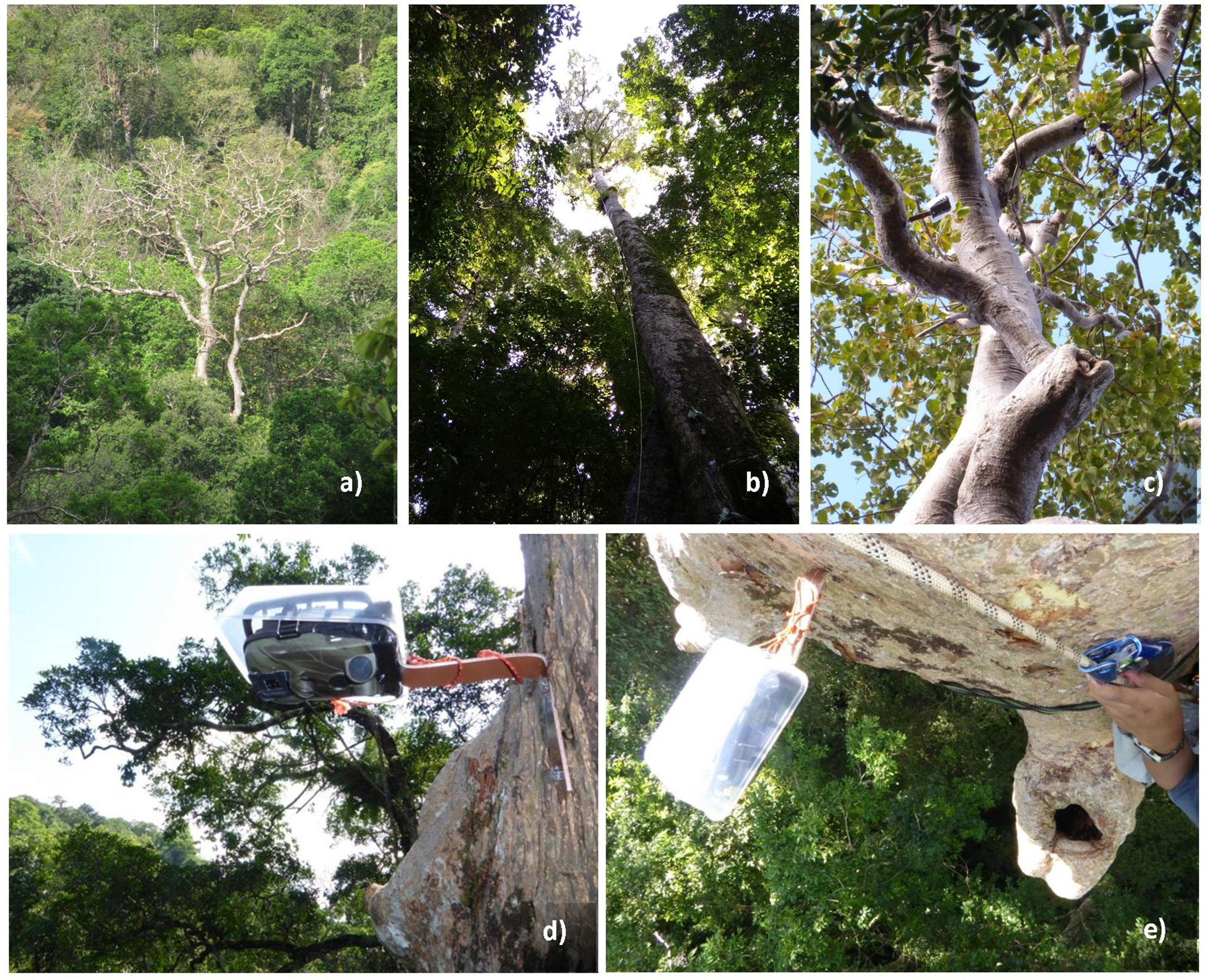
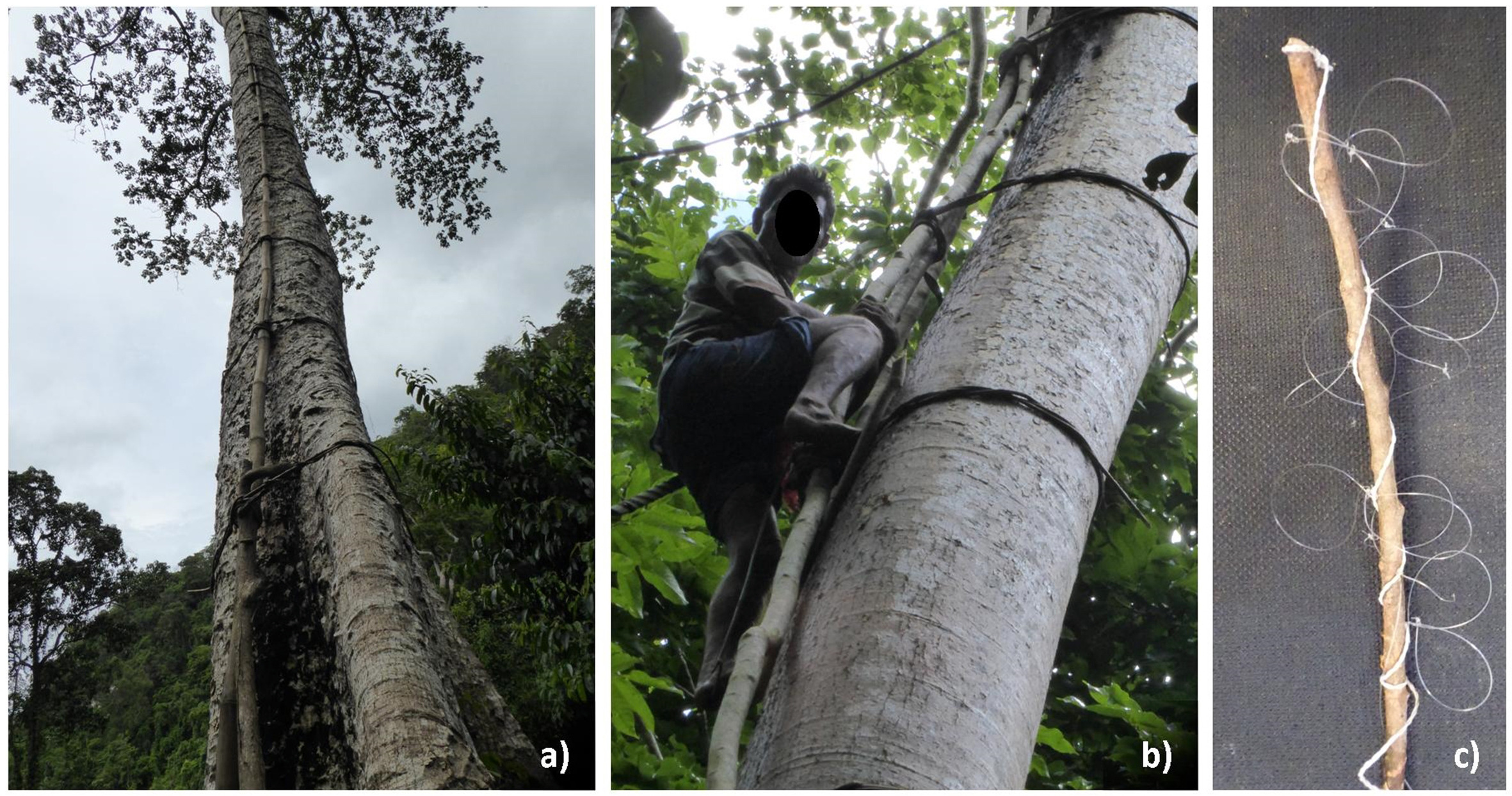
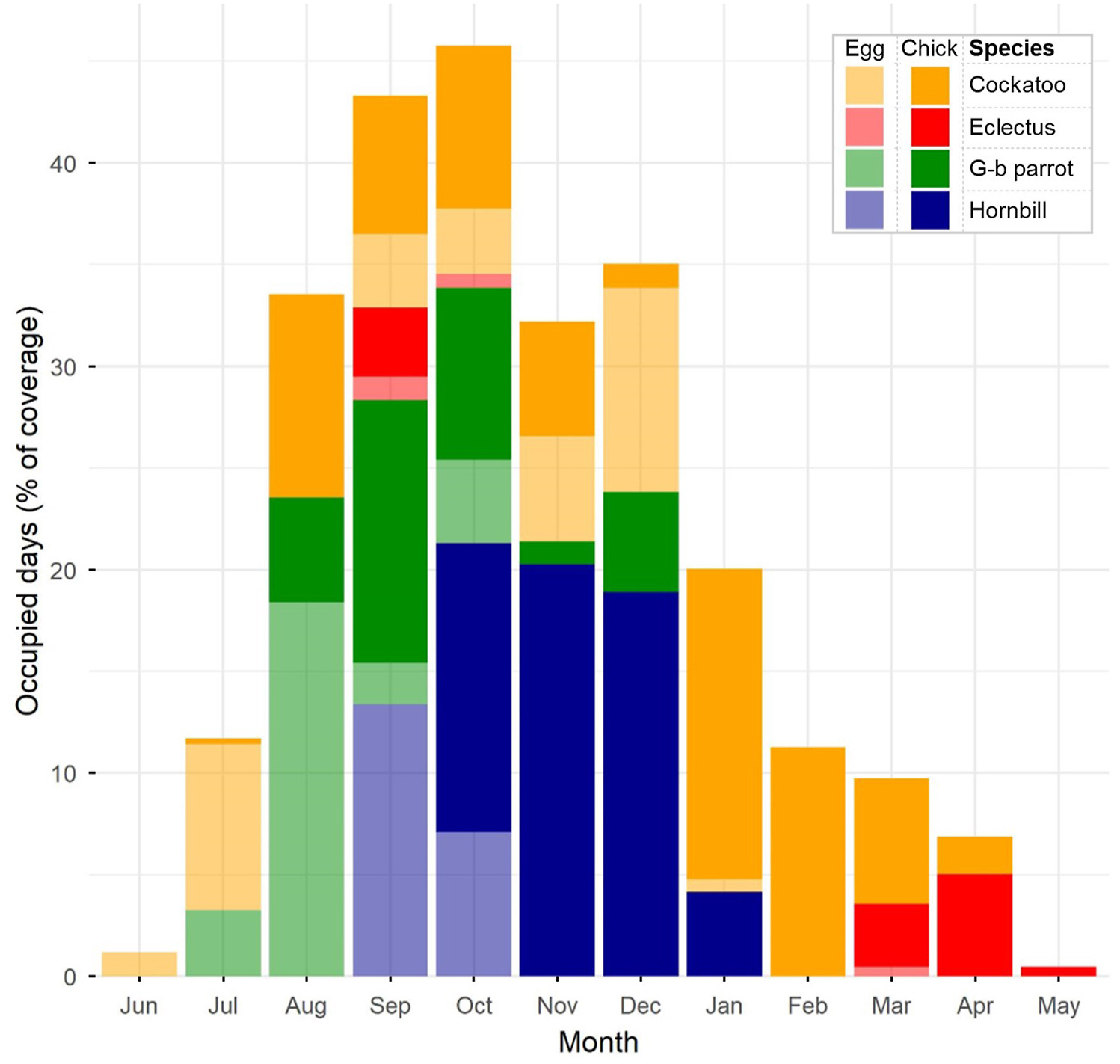
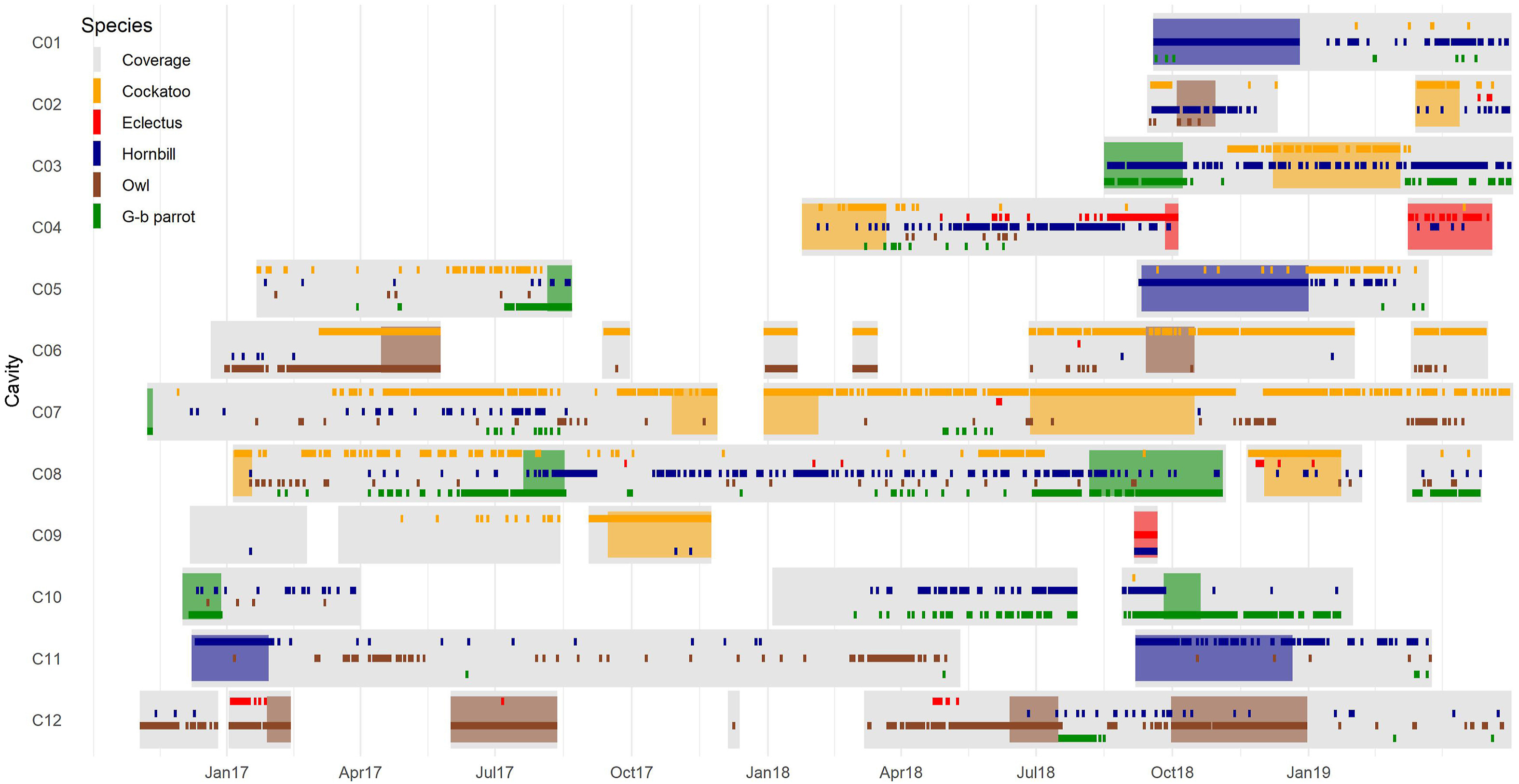

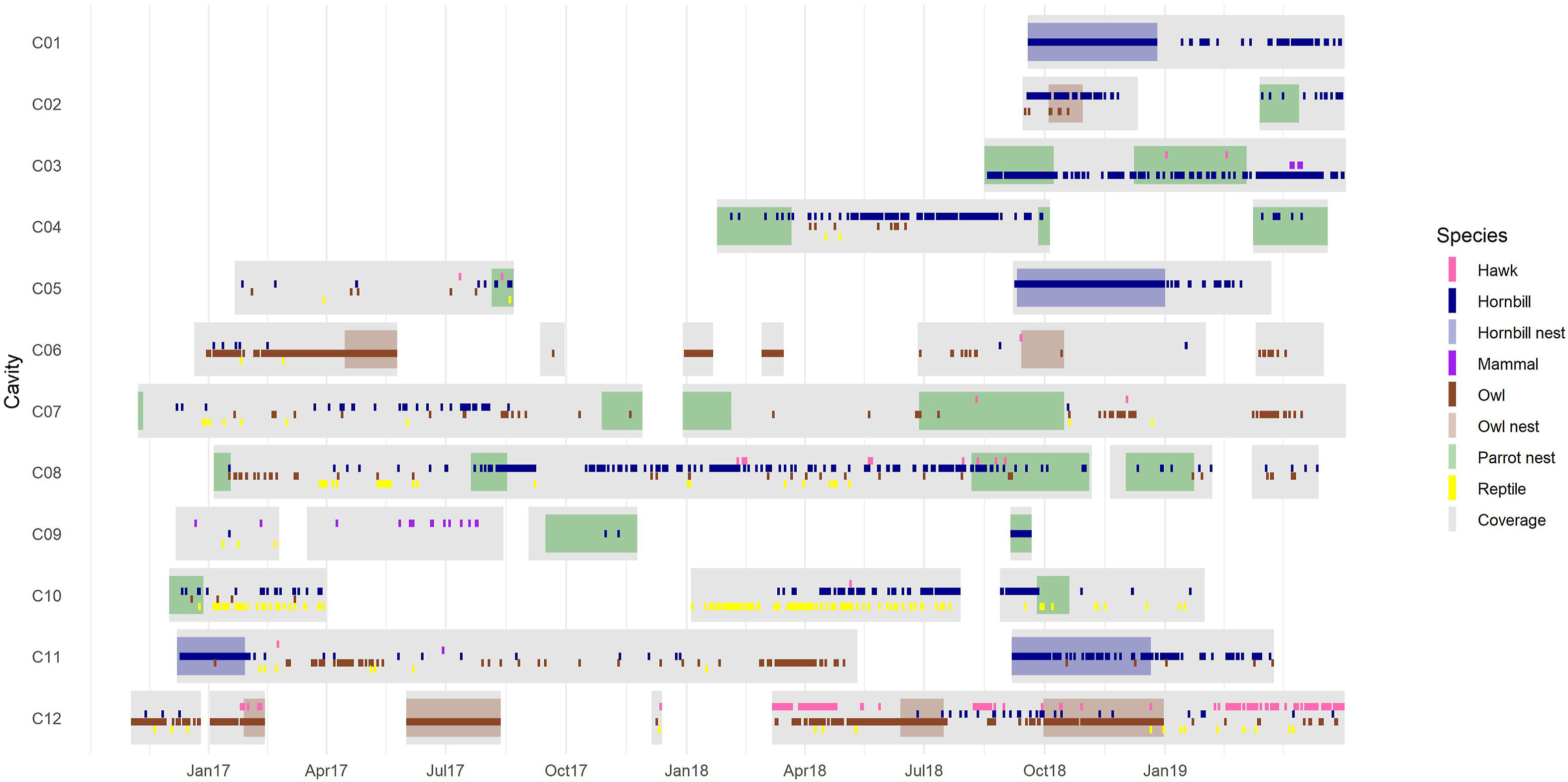





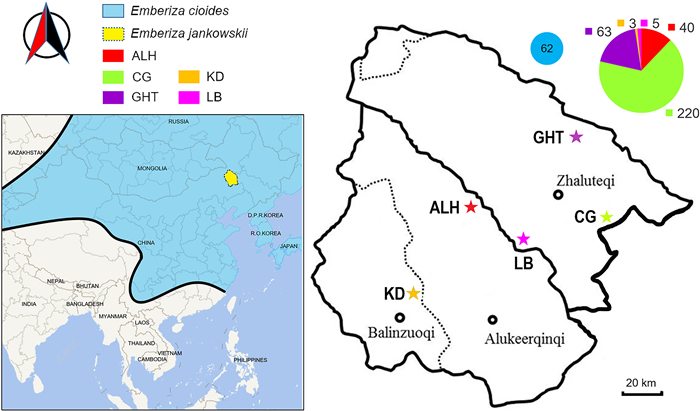





 Email Alerts
Email Alerts RSS Feeds
RSS Feeds